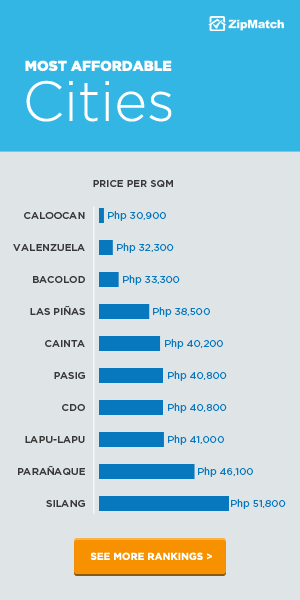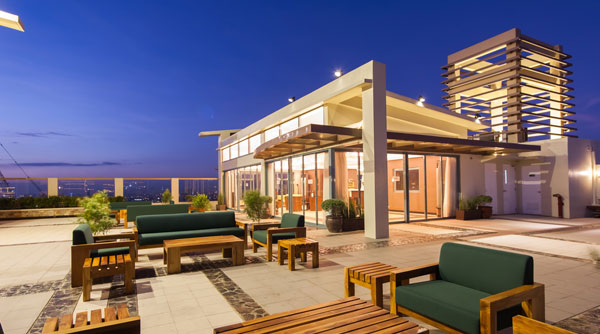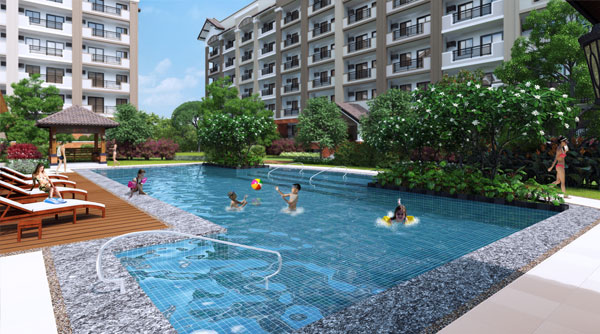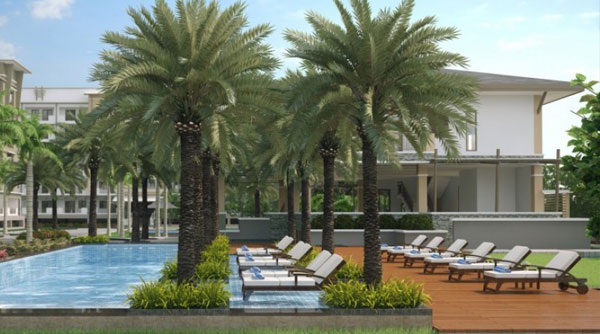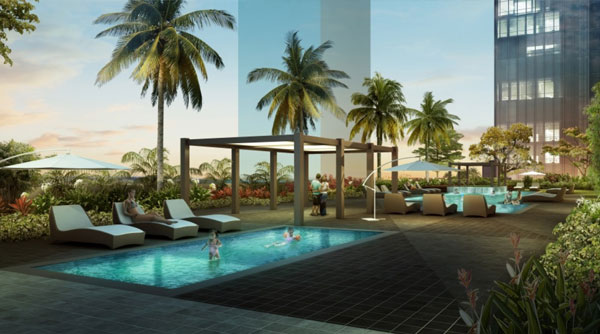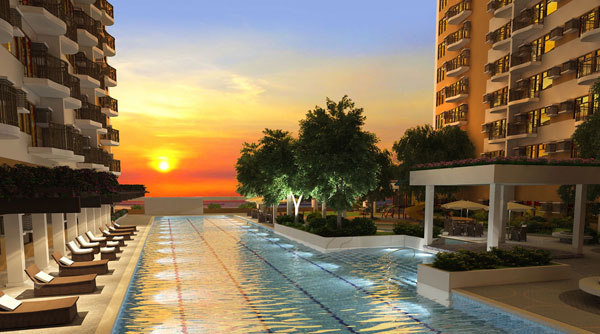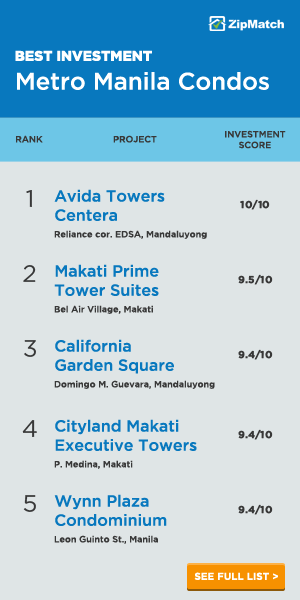We’ve seen them battle for the ball in the court during the University Athletic Association of the Philippines (UAAP) games. And we’ve cheered for their pep squads as they move to the groove during UAAP Cheerdance Competition. This time around we brought the top four universities in the country – University of the Philippines Diliman, Ateneo De Manila University, University of Santo Tomas, and De La Salle University – to identify which among them has best neighborhood.
We list down the considerations about the community that matters to both parents and their children when choosing a school. With one being the highest to four being the lowest score per criteria, here is our verdict:
1. Affordability
Winner: UST
Cost of living and housing are two things to consider when looking at the affordability of a school’s community. Situated in the Sampaloc district, which is mostly a residential location, the neighborhood of UST has the most budget-friendly accommodation prices and even dining options among the four universities. The school is found in the University Belt where there are many housing accommodations within the vicinity. Students can choose from dormitories, boarding houses, rooms for rent, and apartments. Average rental costs around Php 3,000 – Php 6,000 per month.
In the areas of ADMU and DLSU, accommodations are pricier since condominiums and exclusive dormitories are mostly located here. In ADMU, dormitory rates near the school can reach up to Php 10,000 per month. Food, utilities, and other basic essentials are not yet included and ADMU estimated that one would need around Php 20,000 and up depending on the student’s lifestyle and housing option. According to the estimated cost of living made by DLSU, a student’s basic living expenses should be around Php 18,000 per month.
2. Traffic Condition
Winner: UP Diliman
Comprising five different entry points including Commonwealth Avenue, Katipunan Avenue, North Avenue, Philcoa and Quezon Avenue, the neighborhood of UP Diliman is easier to access especially if you have your own vehicle. Note however that the University Avenue is the only road that allows access to all vehicles. An alumni of the university created a handy guide (UPCAT maps) that provides a comprehensive instruction on how to go UP using the entry points when commuting.
What makes the other neighborhoods less desirable in terms of traffic conditions is that they have only one major entry point. Located along the busiest thoroughfares in Metro Manila, heavy traffic is a common occurrence in the DLSU and UST areas because it has one main entry point.
Featuring three lanes widening to four in select areas before tapering back to three, Katipunan Avenue is a major road in Quezon City. Despite its many lanes, it is one of the most heavily congested streets in Metro Manila during peak hours. In a report released by ADMU in the first half of the year, it mentioned that Ateneo-bound vehicles contribute to the immense heavy traffic along Katipunan Avenue.
Aside from private vehicles and public transportation that pass through, trucks are also allowed to pass Mondays to Saturdays. Recently, the MMDA also implemented a new traffic scheme, which according to motorists is mitigating the traffic woes in the area.
3. Flood Situation
Winner: UP Diliman
With most of its neighborhood located in a flood-free area, UP Diliman has the best community in terms of flood situation. Meanwhile, other nearby areas within the school district experience low to moderate flood hazard as seen in Nababaha.com’s hazard maps.
In a report from GMAnews, out of 833 schools located in proximity to flood –prone areas in Metro Manila, MMDA said 262 schools are located in Manila, particularly in España and Taft Avenue. Located along España Boulevard, UST is the most susceptible to flooding because it is the catch basin of Sampaloc area. Floodwaters easily rise in the area even if the rainfall is not that heavy. It is not uncommon to see students wading through the floods during the rainy season. Students of DLSU also encounter the same situation as the school is located in Taft Avenue, which is also identified as a flood-prone area by the MMDA.
4. Safety
Winner: ADMU
Relative to the type of crimes and crime rates, ADMU’s community rises as the safest among the top four universities. All three school neighborhoods have recorded high profile crimes such as the 2010 Philippine Bar Exam bombing in DLSU.
With its narrow and busy streets, thick crowds, and high presence of informal settlers in Sampaloc, where the University Belt is located, the neighborhood of UST is vulnerable to crimes. In 2009, its school paper, The Varsitarian, reported that the three streets surrounding the school were hotbeds for petty crimes including robbery. From the data of the University Belt Area Police Station, there were 54 criminal acts committed in a span of two months. In 2013, the University Belt was also identified as a one of the most crime-prone areas in Metro Manila, according to a report in ANC.
These scenarios are also familiar with students of DLSU. Some of the articles in their school paper, The LaSallian, discussed crimes and the safety of students in the area. They are also no stranger to presence of congested and overcrowded streets, where unscrupulous people take advantage of the school’s reputation as a campus for well-off students.
Meanwhile, UP Diliman’s accessible location is a double edge sword. While it helps students and visitors be in proximity to transportation and conveniences, its openness is also accessible to criminals. In a special report by GMA Network in 2012, they mentioned violent crimes perpetrated in the area including the killing of students, house shooting such as that of UP Professor Randy David’s home, and frat-related crimes. Aside from those reports, a map from graphikos197.wordpress.com shows the crime distribution in UP Diliman from 2010 to 2012. The common crimes that occurred in the area include theft, robbery, damage to property, and physical injury.
5. Centrality and Lifestyle
Winner: DLSU
School life can be very demanding especially when students are living away from home. For those who have to stay in dormitories and have to fend for themselves, they need to have easy access to conveniences that will address their basic needs, such as convenience or grocery stores, laundry shops, water stations, and drugstores. And with the pile of school papers, and let’s not forget those thick thesis that has to be rewritten and reprinted ASAP, having computer shops and other electronic retail stores such as the famous CDR-King nearby is crucial.
DLSU ranks first in the centrality criteria because all these and more are found within the vicinity of the school. In front of the DLSU is a selection of restaurants including McDonald’s, Yellow Cab, Zark’s, and Army Navy. For students who need an urgent I.D. photo, they can choose from among the options situated near the Vito Cruz LRT station. A National Bookstore is also nearby. Other conveniences such as grocery shops, drugstores, computer shops, and photocopy centers are easily accessible.
Also located beside the school are two popular malls that have several fast food chains and internet cafes where students can be found grabbing a snack or printing school papers. One is the University Mall, or fondly called UM by Taft denizens. The other is the EGI Taft Towers, which has a number of commercial establishments in the ground level including internet cafes.
Meanwhile, the other schools also have these conveniences nearby. However, they are not as comprehensive as that found in the neighborhood of DLSU. In front of ADMU are several dining establishments, but you have to use the footbridge to reach them or drive to the area – similar to the situation at UP Diliman. Although there are some dining options and stores for school stuff within the campus, you would still need to catch a ride to visit shopping malls and restaurants.
The Overall Winner
Garnering two number one spots – flood situation and traffic condition, the University of the Philippines Diliman takes home the title of the top university which has the best neighborhood. Aside from that cost of living and accommodation is also affordable. And with it being the number one school in the entire country for academic excellence, who would want to pass the opportunity to study here?
Which do you think has the best neighborhood out of the top four universities? Share with us your thoughts by leaving a comment below.




